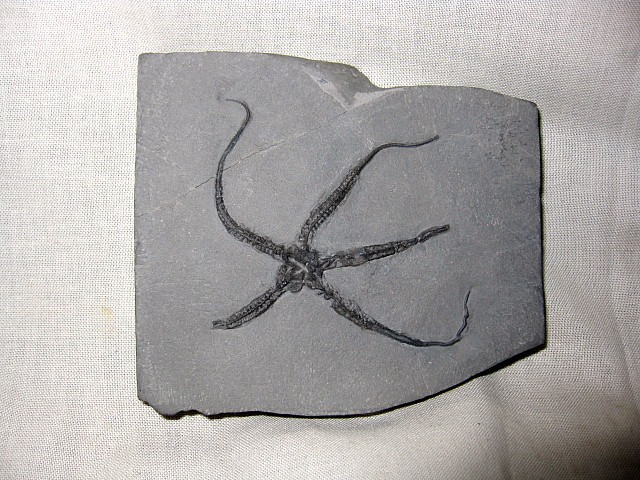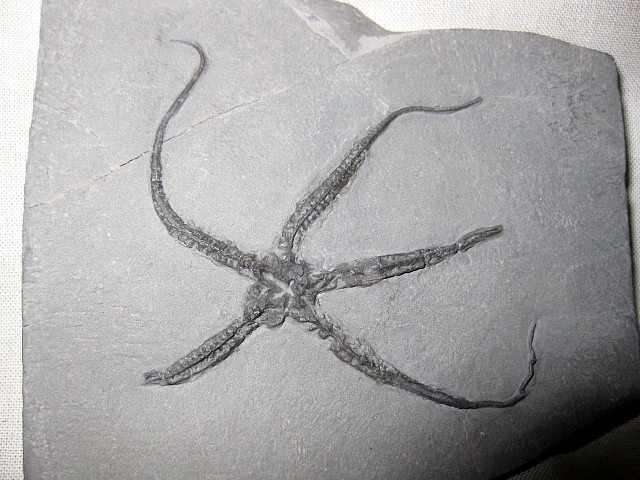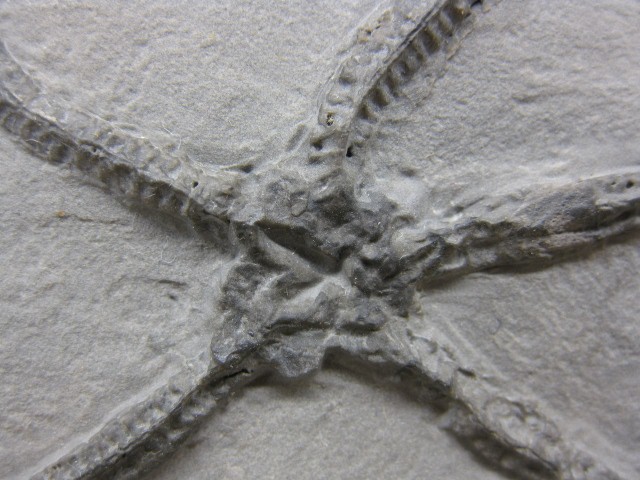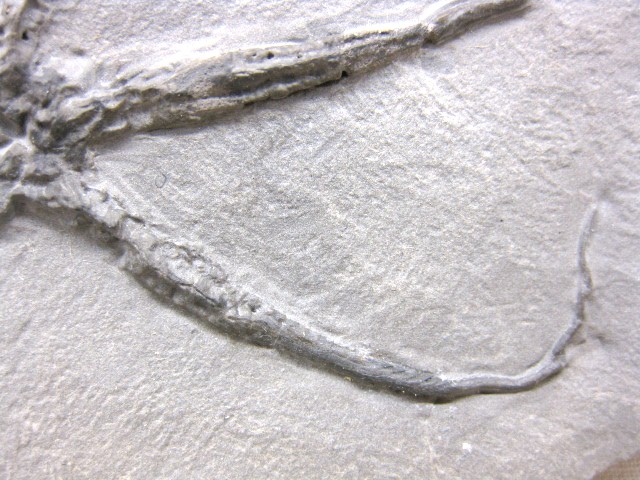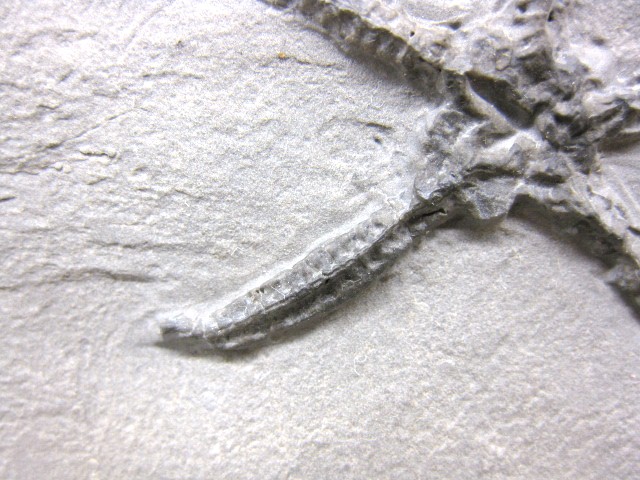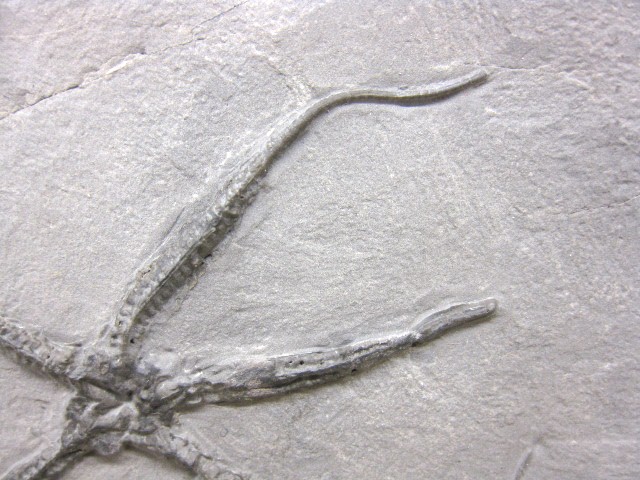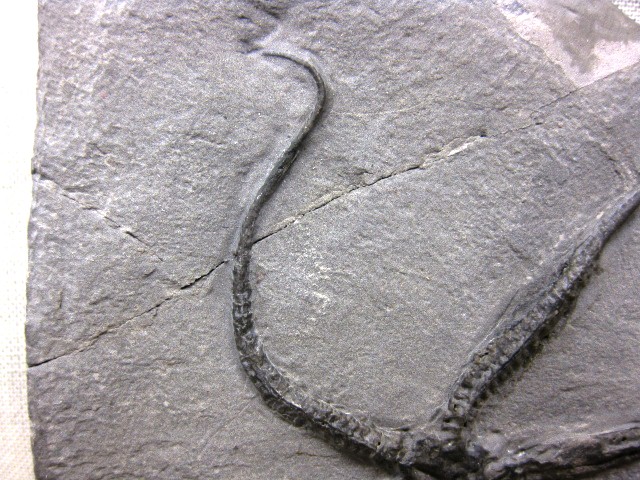Description
- Protaster sp.
- Middle Silurian Age
- Rochester Shale
- Middleport, New York
- The Brittle Star Measures Approx. 3″ wide
Brittle stars or ophiuroids are echinoderms in the class Ophiuroidea closely related to starfish. They crawl across the sea floor using their flexible arms for locomotion. The ophiuroids generally have five long, slender, whip-like arms which may reach up to 60 cm (24 in) in length on the largest specimens. Ophiuroids are a large group (over 1600 species) of echinoderms that includes the brittle stars (Ophiurida) and basket stars (Euryalida). The more familiar Ophiurida, or brittle stars, usually have five arms and superficially resemble true starfish (Asteroidea). However, brittle stars have long, flexible arms (hence the other common name for ophiuroids, “snake stars” and a central, armored, disk-shaped body that is clearly demarcated from the arms. Instead of crawling on hundreds of tube feet like starfish, brittle stars move fairly rapidly by wriggling their arms. These agile arms are supported by an internal skeleton of calcium carbonate plates that superficially look like vertebrae, and that are in fact called vertebral ossicles. These are moved by a system of muscles and linked together by ball-and-socket joints. The body and arms are also protected by calcium carbonate plates, and the arms generally bear delicate spines. Ophiuroids and asteroids probably shared a common ancestor. Early members of both appear in the early Ordovician, roughly 500 million years ago. Ophiuroids are not common fossils; as you might expect from the name “brittle star”, ophiuroids rapidly fall to pieces after death, and are rarely preserved whole.

